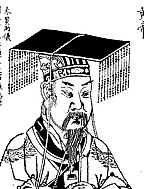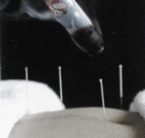Dr ALAN TINNION DOCTOR OF TRADITIONAL CHINESE MEDICINE
AND THERAPEUTIC ARTS
|
|
|
|
|
| |
TRADITIONAL CHINESE MEDICINE |
|
| |
Traditional Chinese Medicine (TCM) has a truly integrated, all encompassing approach to human illness and medical conditions: it approaches and treats these by looking at the broader context in which they manifest rather than at them in isolation. TCM treats the man first and then the specific malady, rightly appreciating that the latter is in all but exceptional circumstances the product of the former (for instance, change for the better a poor/inappropriate diet and the illnesses and conditions caused by such an unhealthy nutritional regime will dissipate and eventually pass). |
|
| |
BRIEF HISTORY OF TCM |
|
| |
TCM is based on concepts of the causes and remedies of disease and illness which are truly ancient, and out of all of east and southern Asia found in their most distinctive form in China, from where its concepts spread to neighbouring lands such as Korea and Japan. |
|
| |
Chinese tradition ascribes first mention of TCM to the Legendary Yellow Emperor (2696-2598 BCE) in the work known as Basic Questions of Internal Medicine ( Neijing Suwen, or, Huangdi Neijing).
Modern research suggests the work was actually created much later between the Chou and Han Dynasties. Zhang Zhong Jing (late 2nd century),China’s most influential teacher of TCM applied medical philosophy wrote his highly influential Treatise on Cold Damage. |
 Emperor Huang Di
Emperor Huang Di |
|
| |
A selection of such highly influential treatises exist to this day, declaring not only the philosophy which underlies TCM, but also its great antiquity.
|
|
| |
THE TCM APPROACH TO THE CAUSES OF ILLNESS |
|
| |
TCM seeks to remedy illness and disease by treating their causative factors, rather than their particular conditions in isolation: it is essentially based on the concept that prevention is better than cure, and that working with and learning from Nature (the holistic approach in which balance and harmonisation of the different inter-related elements of Nature, seen in the medical context of the mind, body, and spirit are ever present as a kind of Golden Rule) is better than synthetic solutions to illness and disease. |
|
| |
TCM CORE CONCEPTS |
|
| |
Traditional Chinese Medicine coalesces into a set of core concepts/schools in which the themes of harmony/balance inter-relate: Yin and Yang; Five Elements [water, fire, wood, metal, earth: these five working in a balanced, positively inter-related constructive way, which can be upset and cause the onset of illness or disease if one or more of the elements is deficient or found in excess]; Zhang Fu Theory; Meridian System; and the Three Jiaos (Lower, Middle, and Upper). Yin and Yang, and Five Element theories for example, relate to broader ancient Chinese spiritual-philosophical systems in such fields as the I Ching/Jing [Eight Trigrams], Tai-Ji and Qi-Gong, traditional martial arts, and the geomantic art of Feng Shui.
|
|
| |
TCM DIAGNOSTIC APPROACH |
|
| |
The diagnostic approach of TCM is based on an overall observation of human symptoms, rather than the more localised characteristics of a specific condition. On this basis the taking of ones pulse, the checking of ones tongue, and the observation of colour, sound, odour, and emotion, all combine in an overall diagnostic approach. |
|
| |
TCM TREATMENTS |
|
| |
Traditional Chinese Medicine utilises the following treatments, singly or in various combinations depending on the illness or medical condition diagnosed: Acupressure (Tui-Na: Chinese Medical Massage); Acupuncture and Moxibustion, including Auricular Acupuncture; Cupping; Herbal Medicine; Food/Dietary Therapies; and the practice of Qi-Gong and Tai-Ji.
|
 Moxibustion and Needles
Moxibustion and Needles |
|
| |
|
|
|
| |
|
|
|